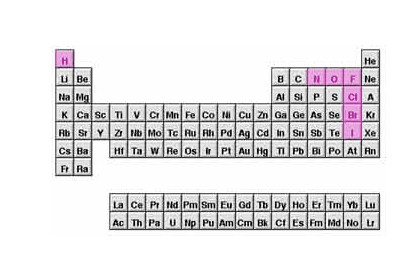We've already learned about the Mole, Avogadro's number etc... but now is the time to apply what we have learned previously into more complex situations!
It is necessary to know the 2 different formulas: Empirical and Molecular
Empirical formula - the smallest ratio of moles or moles in a compound.
Molecular formula - all atoms that form the compound.
For example...
N6O9<-- molecular formula
N2O3<-- empirical formula
Can you tell how the two relate? The molecular formula still has the same ratio -
N2O3- except everything is multiplied by 3.
Converting for Empirical and Molecular formulas!
How to find the Empirical Formula:
To find the E.F, simple conversions must be made. For example, if the number of grams is given, we must convert grams -> moles.
Ex. A compound contains 28 g of carbon and 72 g of oxygen. Find the E.F.
28 g C 1 mol C 72 g O 1 mol O
x 12 g C = 2.333 mol x 16 g O = 4.5 mol
Once we've converted the grams into moles, we want to divide each mole value by the
smallest mole value (this is to get one of our mole values to equal 1, making the conversion to whole numbers simpler)
2.333 mol C
4.5 mol O
2.333 mol = 1 mol 2.333 mol = 1.95 mol
You see how there are 1.95 moles of oxygen? Well, we want to leave our answers in whole numbers, so we can round 1.95 to 2. Since the moles of carbon is 1, we can just leave it as a one. Therefore, the E.F is CO
2.
How to find Molecular Formula
To find the M.F, we calculate the molar mass of the compound.
Ex. A gas has the E.F of
N2O3. What's the molecular formula if there are 228 g per one mole?
N
2 --> 28 g
O
3 --> 48 g
48 g + 28 g = 76 g
The molar mass of
N2O3 is 76 g.
Next step is to divide the number of grams per mole by the molar mass!
228 g
76 g = 3
Now that we know that there's 3 times the amount of grams in the original mass than in the molar amount, we can just multiply the E.F
N2O3 by 3
3(
N2O3) =
N6O9
Therefore, the M.F. is N6O9.
We can double check to see if it's right:
N --> 6 atoms x 14 g = 84 g
O --> 9 atoms x 16 g = 144 g
144 g + 84 g = 228 g
YES! The answer matches the original mass, so we know our answer is correct!
Want to learn more about Empirical and Molecular Formulas? Check out these great links!
Empirical Formulas
http://www.youtube.com/watch?v=r2Log6-voWo
Molecular Formulas
http://www.youtube.com/watch?v=nslC7lOSc7Y










 The molar mass is 9.01g/mol.
The molar mass is 9.01g/mol.

